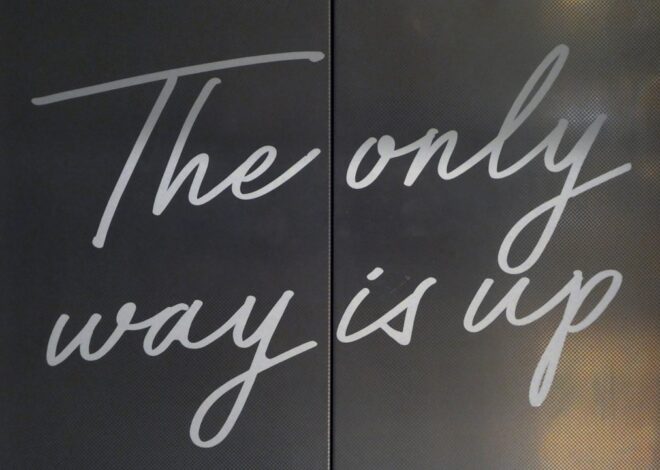
The Art of Skin Body Painting: Transforming the Canvas
Skin body painting has a long and varied history dating back to ancient civilizations. Many cultures used body painting for rituals, celebrations, and expression. Indigenous tribes in Africa and the Americas, as well as ancient civilizations in Egypt and India, incorporated body painting into their cultural traditions for centuries.
These early forms often featured intricate designs and symbols representing cultural beliefs and values, and were used in ceremonies, rites of passage, and religious rituals. Over time, body painting evolved into a form of artistic expression, with artists using the human body as a canvas. In the 20th century, it gained popularity as avant-garde art, with artists like Yves Klein and Yayoi Kusama utilizing the human body as a medium.
Today, skin body painting is a recognized art form, with festivals, competitions, and exhibitions showcasing artists’ talents worldwide. In recent years, skin body painting has also become prominent in fashion and entertainment, with designers, photographers, and filmmakers incorporating it into their work. This ancient art form has evolved beyond its traditional roots to become a modern means of self-expression and empowerment, captivating audiences with its beauty and creativity.
Key Takeaways
- Skin body painting has a rich history dating back to ancient rituals and has evolved into a modern art form.
- Various techniques and tools are used to transform the human canvas, including airbrushing, hand painting, and stenciling.
- Body painting plays a significant role in different cultures, often being used in celebrations, ceremonies, and traditional rituals.
- Skin body painting is a powerful form of self-expression and empowerment, allowing individuals to showcase their creativity and individuality.
- The intersection of skin body painting and fashion is evident in runway shows and editorial shoots, where body art is used to make a bold statement and push boundaries.
Techniques and Tools: The Process of Transforming the Human Canvas
The Techniques of Body Painting
Body painting artists employ a range of techniques to transform the human body into a work of art. One of the most popular techniques is airbrushing, which enables artists to create intricate designs and patterns with precision and control. This method involves using an airbrush gun to apply paint to the skin, resulting in a smooth and seamless finish.
Tools of the Trade
In addition to airbrushing, body painting artists use a variety of tools to create different textures and effects on the skin. These include brushes, sponges, and stencils, which allow artists to experiment with different techniques and styles, from bold and graphic designs to delicate and intricate patterns.
Paints and Pigments
Body painting artists also use a range of paints, including water-based and alcohol-based formulas, each offering different qualities such as longevity, vibrancy, and ease of application. The choice of paint depends on the desired effect and the artist’s personal preference.
The process of skin body painting requires patience, attention to detail, and a deep understanding of the human form. Body painting artists must consider the contours and curves of the body when creating their designs, ensuring that the finished artwork complements the natural shape and movement of the human form. The techniques and tools used in skin body painting are essential in bringing the artist’s vision to life, transforming the human canvas into a stunning work of art.
The Role of Body Painting in Different Cultures: Celebrations, Ceremonies, and Traditions

Body painting plays a significant role in various cultures around the world, serving as a form of celebration, ceremony, and tradition. In many indigenous cultures, body painting is used to mark important milestones such as coming-of-age ceremonies, weddings, and religious rituals. These intricate designs and symbols hold deep cultural significance, representing the values, beliefs, and traditions of the community.
In Africa, body painting has been used for centuries as a form of cultural expression and identity. Different tribes use unique designs and patterns to distinguish themselves from one another, with each design carrying specific meanings related to their cultural heritage. Similarly, in India, body painting is an integral part of religious festivals and ceremonies, with elaborate designs adorning the skin as a form of devotion and celebration.
In addition to traditional cultural practices, body painting has also become a popular form of artistic expression in contemporary culture. Festivals and events dedicated to body painting showcase the diversity and creativity of this art form, bringing together artists from different backgrounds to celebrate their unique talents and perspectives. The role of body painting in different cultures is a testament to its enduring significance as a form of cultural expression and celebration.
Skin Body Painting as a Form of Self-Expression and Empowerment
| Aspects of Skin Body Painting | Benefits |
|---|---|
| Artistic Expression | Allows individuals to express their creativity and emotions through body art |
| Cultural Significance | Connects individuals to their cultural heritage and traditions |
| Self-Empowerment | Helps individuals feel confident and empowered in their own skin |
| Body Positivity | Promotes acceptance and celebration of diverse body types and forms |
| Community Connection | Brings people together through shared experiences and artistry |
Skin body painting has emerged as a powerful form of self-expression and empowerment for individuals around the world. Through body painting, individuals have the opportunity to express their creativity, celebrate their bodies, and challenge societal norms. For many people, body painting serves as a form of liberation, allowing them to embrace their bodies in a way that is both empowering and affirming.
Body painting has also been used as a platform for social commentary and activism, with artists using their work to address issues such as body positivity, gender equality, and cultural diversity. Through their art, these artists seek to challenge stereotypes and promote inclusivity, using the human canvas as a means of sparking important conversations about identity and representation. In recent years, social media has played a significant role in amplifying the voices of body painting artists and enthusiasts, providing a platform for them to share their work with a global audience.
Through platforms like Instagram and YouTube, artists have been able to showcase their talent and connect with like-minded individuals who share their passion for body painting. Skin body painting has become a powerful tool for self-expression and empowerment, allowing individuals to celebrate their bodies in all their diversity and beauty.
The Intersection of Skin Body Painting and Fashion: Runway Shows and Editorial Shoots
Skin body painting has become increasingly intertwined with the world of fashion, with designers and photographers incorporating body painting into their work to create stunning visual experiences. On the runway, body painting has been used to complement fashion collections, adding an element of artistry and creativity to the presentation. Designers have collaborated with body painting artists to create avant-garde looks that blur the lines between fashion and art, captivating audiences with their innovative approach to design.
In editorial shoots, body painting has been used to create striking images that push the boundaries of conventional beauty standards. Photographers have worked with body painting artists to produce editorial spreads that celebrate the human form in all its diversity, using bold colors and intricate designs to create visually arresting images. These collaborations have challenged traditional notions of beauty in fashion, showcasing the transformative power of body painting as a form of artistic expression.
The intersection of skin body painting and fashion has opened up new possibilities for creative collaboration, inspiring designers, photographers, and artists to push the boundaries of their respective fields. Through these collaborations, body painting has become an integral part of fashion storytelling, offering a fresh perspective on beauty and self-expression.
Skin Body Painting in the Entertainment Industry: Film, Television, and Theater

Bringing Fantasy to Life on Screen
Skin body painting has revolutionized the entertainment industry, with filmmakers, television producers, and theater directors incorporating it into their productions to create visually stunning experiences. In film and television, body painting has been used to bring otherworldly characters to life, with artists using intricate designs and special effects makeup to transform actors into fantastical creatures and beings. From science fiction epics to historical dramas, body painting has played a crucial role in enhancing the visual storytelling of these productions.
Immersive Experiences on Stage
In theater productions, body painting has been used to create immersive experiences that transport audiences to different worlds and time periods. From elaborate historical dramas to avant-garde experimental performances, body painting has been used to enhance costumes and create visually striking characters on stage. The use of body painting in theater allows for a level of creativity and expression that goes beyond traditional costume design, offering audiences a truly unique visual experience.
A Global Platform for Artists
The integration of skin body painting into the entertainment industry has opened up new opportunities for artists to showcase their talent on a global stage. Through their work in film, television, and theater, body painting artists have demonstrated the transformative power of their craft in bringing stories and characters to life in captivating ways.
The Future of Skin Body Painting: Innovation, Sustainability, and Inclusivity
As skin body painting continues to evolve as an art form, there is an increasing focus on innovation, sustainability, and inclusivity within the industry. Artists are exploring new techniques and materials to push the boundaries of what is possible with body painting, experimenting with innovative approaches that challenge traditional norms. From 3D projection mapping to interactive digital experiences, the future of skin body painting holds exciting possibilities for artistic innovation.
In addition to innovation, there is also a growing emphasis on sustainability within the body painting community. Artists are seeking out eco-friendly paints and materials that minimize environmental impact while still delivering vibrant colors and long-lasting results. By prioritizing sustainability in their practice, body painting artists are contributing to a more environmentally conscious approach to their craft.
Furthermore, there is a concerted effort within the industry to promote inclusivity and diversity in body painting. Artists are using their platforms to advocate for representation across all genders, ages, ethnicities, and body types. By celebrating diversity through their artistry, these artists are challenging traditional beauty standards and promoting a more inclusive vision of beauty.
In conclusion, skin body painting has a rich history that spans across cultures and time periods. From ancient rituals to modern art forms, body painting continues to captivate audiences with its beauty and creativity. As it intersects with fashion, entertainment, and social movements, skin body painting remains an enduring form of self-expression that celebrates the human canvas in all its diversity.
With a focus on innovation, sustainability, and inclusivity, the future of skin body painting holds exciting possibilities for artistic expression and cultural celebration.
If you’re interested in skin body painting, you might want to check out this article on underglowskin.com. This website offers a variety of resources and tips for creating stunning body art using skin-safe paints and techniques. Whether you’re a beginner or an experienced artist, you’ll find plenty of inspiration and guidance on this site. So, if you’re looking to take your skin body painting to the next level, be sure to give this article a read.
FAQs
What is skin body painting?
Skin body painting is the art of using the human body as a canvas for creating designs, patterns, and images using body-safe paints and pigments. It is a form of artistic expression and can be used for cultural, ceremonial, or entertainment purposes.
What types of paints are used for skin body painting?
Body paints used for skin body painting are typically water-based or alcohol-based and are specifically formulated to be safe for use on the skin. These paints are designed to be non-toxic, hypoallergenic, and easily washable.
Is skin body painting safe?
When done using body-safe paints and under proper supervision, skin body painting is generally considered safe. It is important to use high-quality, non-toxic paints and to ensure that the artist and the model are both aware of any potential skin sensitivities or allergies.
What are the cultural and historical significance of skin body painting?
Skin body painting has been used for centuries in various cultures for rituals, ceremonies, and cultural celebrations. It has been a way to express identity, spirituality, and social status. In some cultures, body painting is also used as a form of storytelling and to connect with nature.
What are some popular styles and techniques in skin body painting?
There are various styles and techniques used in skin body painting, including traditional tribal designs, abstract patterns, realistic imagery, and avant-garde artistic expressions. Some popular techniques include airbrushing, hand-painting, and using stencils to create intricate designs.
Where can one see skin body painting in practice?
Skin body painting can be seen at art exhibitions, cultural festivals, fashion shows, and performance art events. It is also commonly used in the entertainment industry for music videos, theatrical productions, and themed events. Additionally, there are competitions and conventions dedicated to the art of skin body painting.


